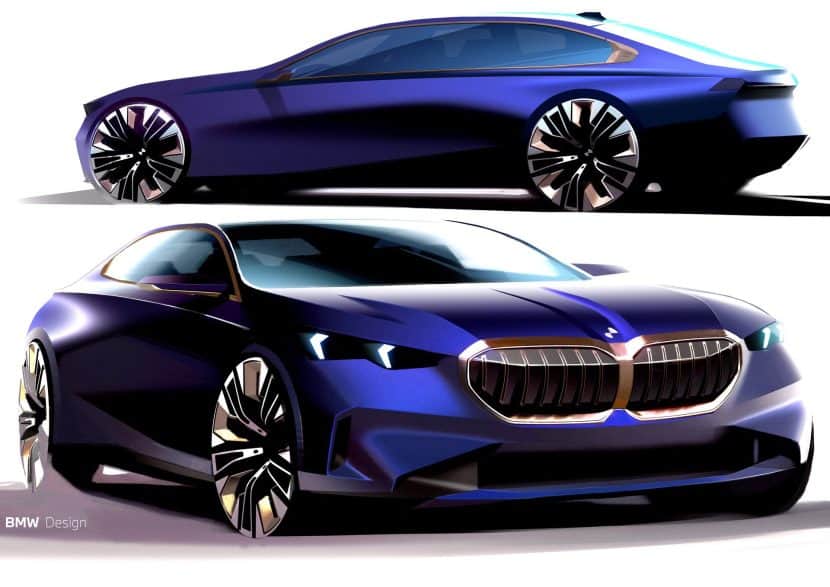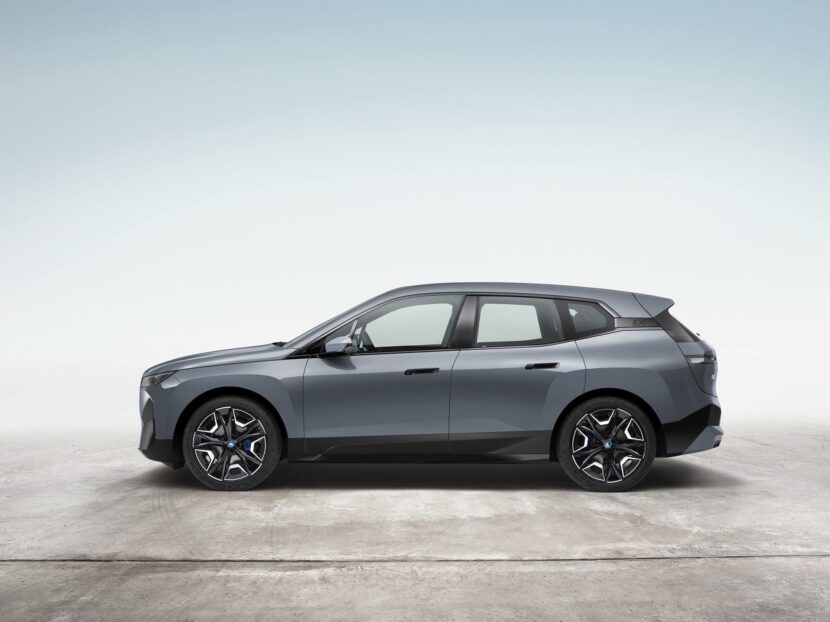What Is BMW’s Monolithic Design Philosophy? A Deep Dive Into Bold Simplicity


BMW’s new design philosophy embraces simplicity and boldness, combining minimalist surfaces with striking proportions that distinguish it from traditional automotive styling. This so-called “monolithic” approach represents a pivotal shift for the brand. It signals a future-focused vision that challenges conventions and redefines BMW’s identity. But what does this mean within the BMW universe, and how did this daring vision take shape?
The Symbolism of the Monolith
A monolith, by definition, refers to a single large block or piece of stone placed intentionally by humans. The term may evoke Stanley Kubrick’s iconic opening scene in 2001: A Space Odyssey, where the black monolith sparks the evolution of apes into intelligent beings capable of space exploration. Stepping out of the sci-fi realm, BMW uses this symbolism to suggest that its designs stand apart from competitors still evolving. Does the modern BMW serve as a monolith, contrasting sharply with its rivals? Let’s explore the designers’ reasoning.
The iX: Where It All Began


Four years ago, BMW unveiled one of its most polarizing models in history: the iX. Serving as the flagship of the BMW i sub-brand, this electric SUV (i20) broke away from familiar X model designs. Its revolutionary silhouette departed from the typical proportions of the X3 and X5. BMW eliminated organic creases, complex lines, and protruding door handles on the side profile, leaving polished and smooth surfaces that clash with squared wheel arches. Designers reinterpreted the Hofmeister kink with a blacked-out D-pillar, while retaining iconic design elements. At the rear, slim L-shaped taillights evoke designs from BMW sedans, coupes, and SUVs.
The iX’s front design, based directly on the 2018 Vision iNext concept, features slim, upright headlights with minimal arrow-shaped LED daytime running lights. This marked a true departure from the angel eyes that fans traditionally associated with BMW. Connecting seamlessly into the kidney grille, the headlights resemble the 2015 (F25) X3 design. Designers gave this electric model the largest-ever “self-repairing” kidney grille, with hood creases sculpted to emphasize the imposing front fascia.
BMW’s marketing campaign for the iX included a YouTube series titled ReThinking Design, where designers explained the monolithic approach. In the first episode, Kai Langer, Head of BMW i Design, described the iX as “a pinnacle, a technical lighthouse.” Dirk Müller-Stolz, Head of BMW i Exterior Design, highlighted the monolithic exterior as one where “every detail blends into the sculpture.”
By combining minimalist surfaces with imposing proportions, BMW aimed to create a design that stood apart from its previous models. Müller-Stolz emphasized that the iX represented a “courageous approach to propel BMW Group into the future.” Designers understood the risks of such a leap but remained committed to a vision that would shape future models.
The Monolithic Design Family
After the iX’s launch, BMW revealed the i Vision Circular concept in 2021. This concept previewed future compact models and incorporated design elements seen in models released through 2024. These elements included dual vertical LED headlights, illuminated kidneys, hood indents separating the kidneys, Hoffmeister kink graphics, and interactive light bars. The flagship 7 Series and i7 later adopted many of these design cues.
When BMW released the (G70) 7 Series and its electric variant, the i7, press materials described their exteriors as featuring “monolithic surface design and a new front end developed for luxury models.” The smooth door surfaces, flush handles, and tall character line epitomize this monolithic approach. Designers also introduced split headlights as a defining feature for luxury BMW models like the 7 Series and X7.
Identifying Monolithic Design Models
The actual catalog of BMW models is composed of designs from different eras, which is why many fans have criticized the lack of consistency across the lineup recently. Take for instance the design of the recent X5 (G05) and the new X2 (U10). Both came out in 2023 but the key difference is that one’s design is monolithic and the other isn’t. Can you guess which?
If you thought of the X5, we don’t blame you as it can get rather confusing with so many new models and facelifts these days. Despite being released in 2023, the X5 is a Life-Cycle-Impulse —facelift in BMW jargon— which is still composed of a design language that came out in 2018. It may have received a fresh pair of headlights and taillights to stay updated with the rest of the lineup but still, the car belongs to a previous era of design at Bavaria.
Well, not exactly. Same as with the case of the X5, the 2025 2 series GC (F74) is a heavily facelifted version of its predecessor. And, despite having a redesigned front and rear end, the side view of the car remains practically untouched. It is the side view where monolithic design models contrast best with the rest of the lineup. Of course, there are some inconsistencies with this system of identifying them, such as the 4 series Gran Coupe (G26) also featuring the flush door handles, or the new X1 (U11) not having the iconic glow kidneys. Nevertheless, at least now we can have a rough idea when we see a brand new BMW rolling in the streets.
Here’s a list of confirmed monolithic models:
- 2021 iX (i20)
- 2023 X1/iX1 (U11)
- 2023 X2/iX2 (U10)
- 2025 X3 (G45)
- 2024 5/i5 (G60/61)
- 2025 M5 (G90/91)
- 2022 7/i7 (G70)
What’s Next for BMW Design?
BMW’s next chapter begins with the Neue Klasse platform, which will debut with the all-new iX3 in 2025. Designers will refine the monolithic philosophy with minimalist surfaces and introduce a “phygital” front design. This unique fascia will feature a horizontal glass panel housing headlights with a 3D depth effect. Unlike previous designs, the kidneys will appear significantly smaller, aligning with the model’s minimalist aesthetic.
Sedans will take a different approach by bisecting the horizontal glass panel without small kidneys. With plans to extend the Neue Klasse design language to future ICE models, BMW will likely transform its entire lineup over the coming years. No matter how controversial these designs become, BMW consistently surprises its audience.
First published by https://www.bmwblog.com
Source: BMW BLOG
Recent Posts
Apple begins work on future M6 chip with modems for future Macs
Apple is already looking beyond its next generation of M-class chip, designing the future M6…
Tony Gilroy Hopes Andor Helps Star Wars Tell New Stories
Andor proved Star Wars can be more than death stars and laser swords, and he…
GTA 6’s release date is still secret because Take-Two boss wants to “maintain the anticipation and excitement”
Take-Two Interactive boss Strauss Zelnick has revealed why the publisher is keeping Rockstar's Grand Theft…
156/SILENCE Make Statement About The Passing of Their Bassist, Lukas Booker
156/Silence has issued a beautiful statement regarding the sudden passing of their bassist, Lukas Booker.…
The BMW iX is Literally as Quiet as a Rolls-Royce, and Some Others
The BMW iX does a lot of things really well. It’s luxurious, pretty quick, and…
Myst studio Cyan Worlds lays off half its team
Riven developer Cyan Worlds has cut its staff count by half. Read more